Deep, dark caverns. Eerie hydrogen sulfide clouds. Jagged stalactites and stalagmites.
Cenote diving in Tulum is the ultimate bucket list adventure. It was the highlight of my trip and a once-in-a-lifetime experience.
To answer all the questions I had, I’ve created this detailed guide with everything you need to know about diving cenotes in Tulum, including the price, logistics, certification requirements, and more!
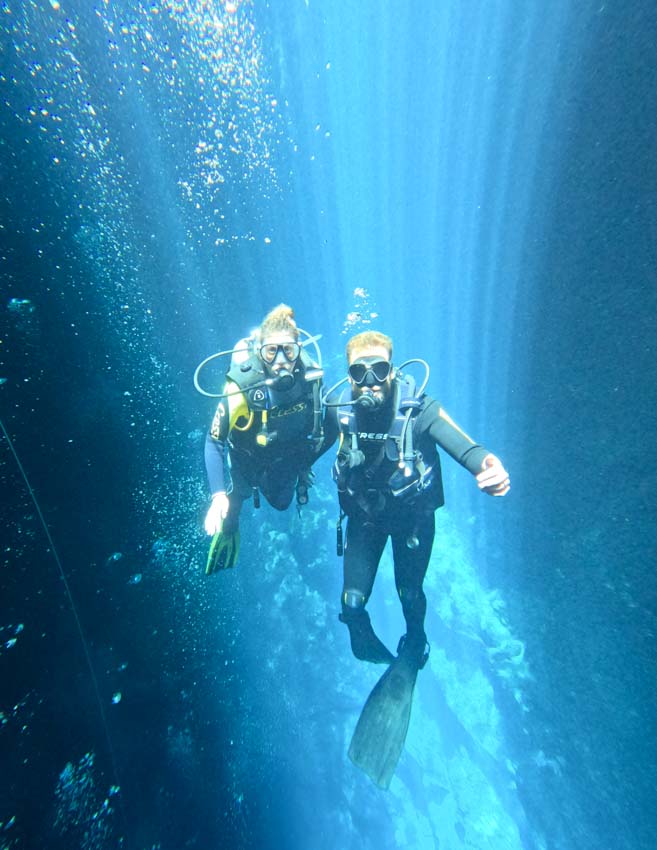
Quick Navigation
Where to go cenote diving in Mexico
Tulum is the best place to go cenote diving in Mexico.
Situated in the Yucatan Peninsula, it’s home to the most spectacular caves and caverns featuring stalactites, fossilized seashells, and natural formations that you won’t see anywhere else.
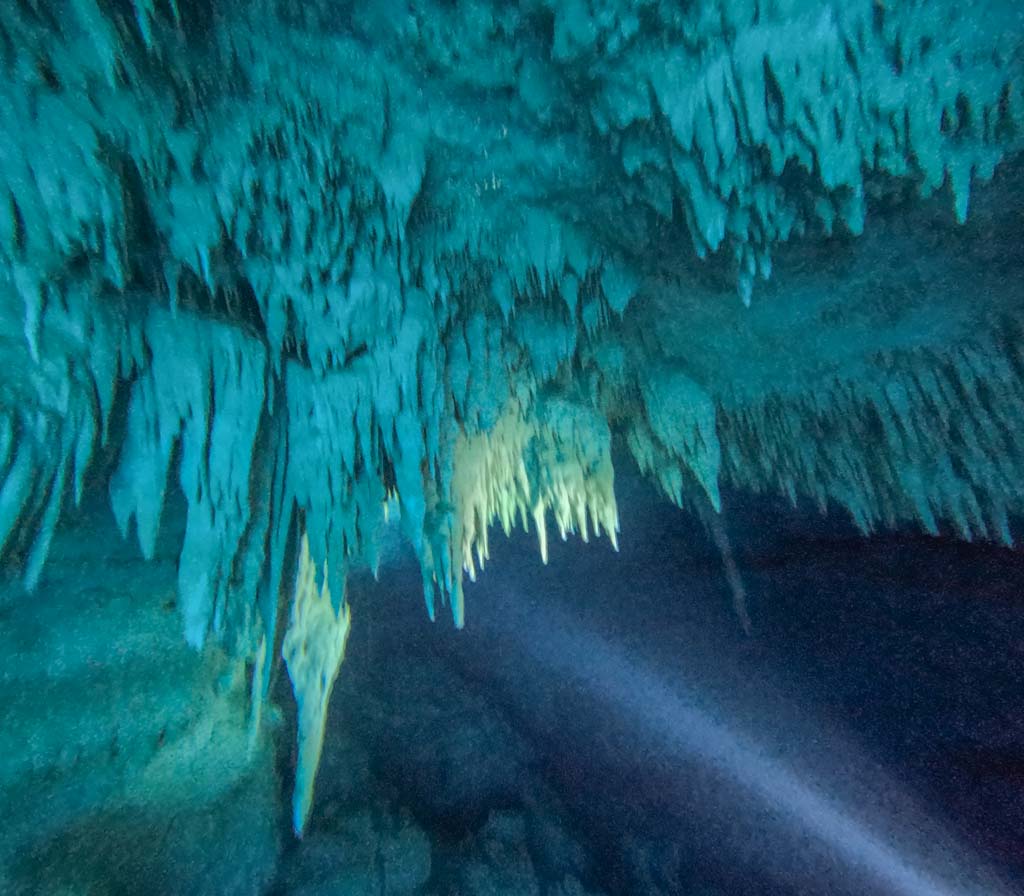
What scuba diving certifications do you need
You don’t have to be a certified cave diver to dive the cenotes in Tulum – but your guide needs to be.
So long as you stay in the cavern areas which have access to natural light and an easy exit, the minimum requirement to go cenote diving in Mexico is an Open Water Dive Certification.
However, if you wish to explore the more exciting cenotes in Tulum, it’s best to have an Advanced Open Water Certification. This allows you to do deeper dives and explore more advanced areas of the cenote.
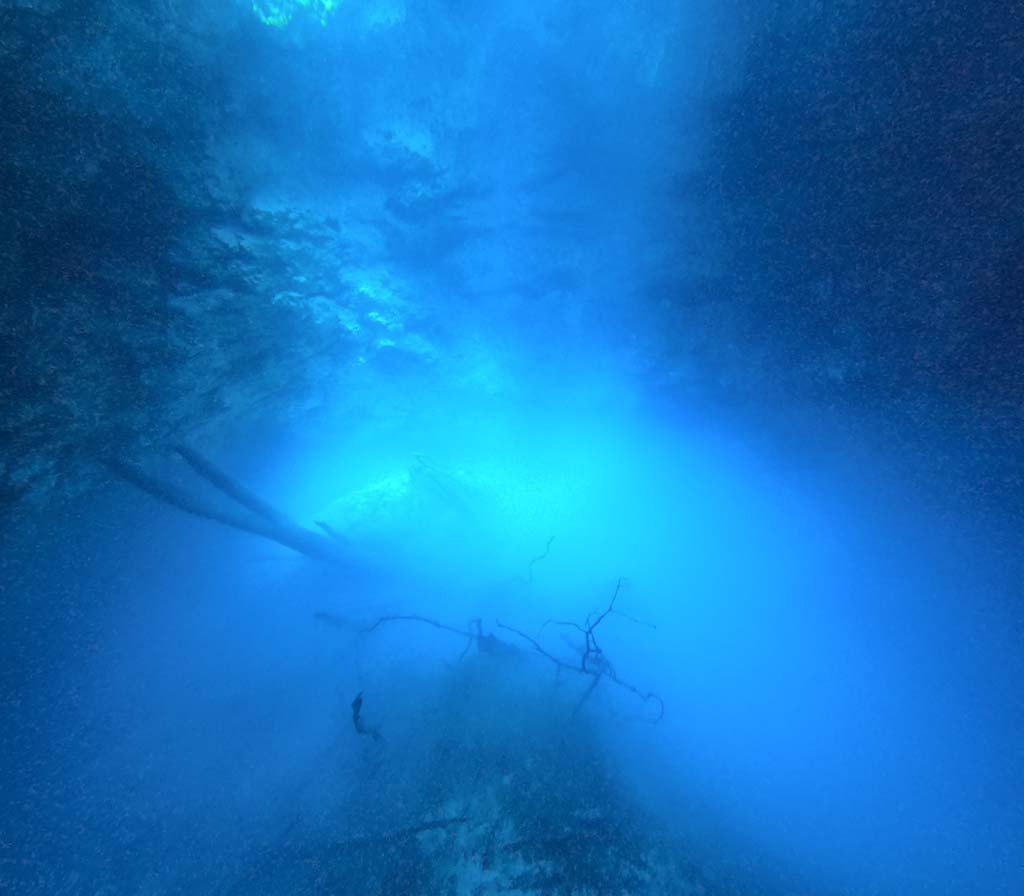
What to expect when cenote diving in Tulum…
… or what not to expect!
You won’t see any exciting marine life, no schools of fish and there’s no colorful coral like you’ll find at these dive sites in Cozumel.
Cenote diving is a whole different type of diving!
It’s thrilling and magical.
You’ll venture through enclosed spaces and witness magical beams of light shining into the cenote. You’ll descend beneath halocline layers and use a torch to navigate around dark corners of the cavern.
And while that might sound scary to some (it certainly did to me), there are numerous cenotes in Tulum with varying levels of difficulty. Some are less intimidating than others, and your dive guide will recommend those that are best suited to your skill and experience.
Best Tulum Cenote diving
There are many cenotes to dive in Tulum, each remarkable in their own way. Here are my top 5 for beginners or more experienced divers.
The Pit
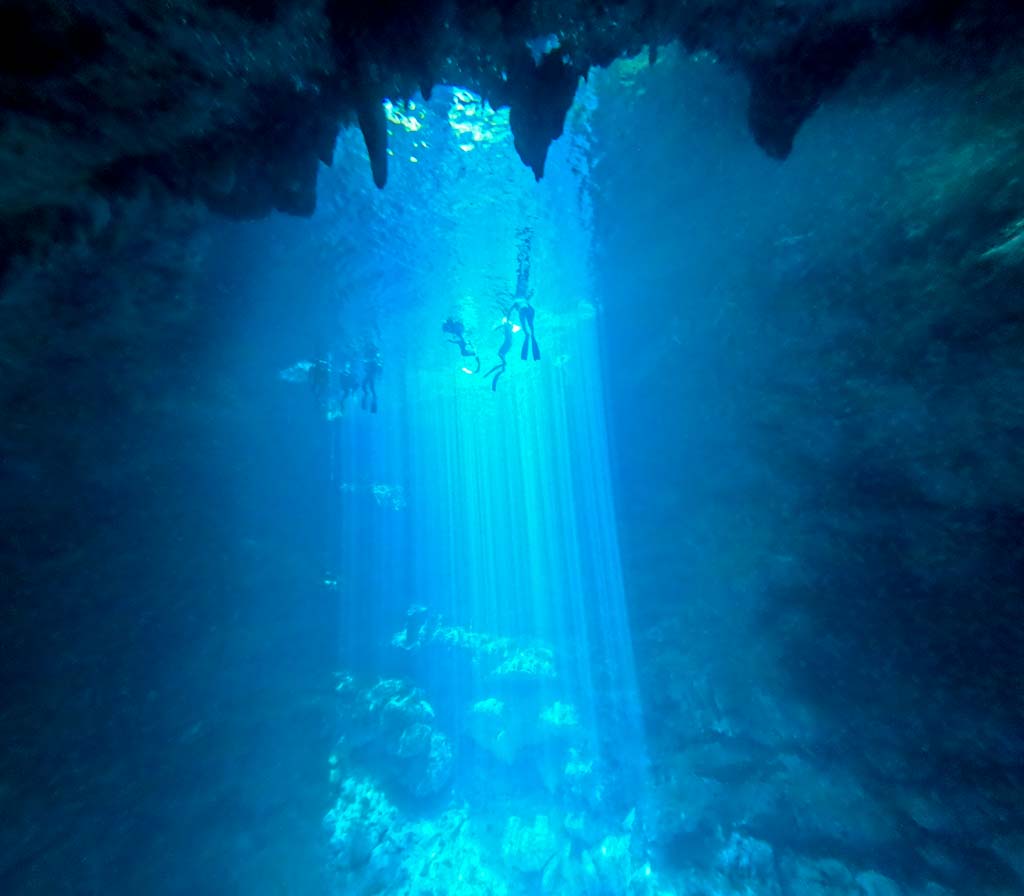
- Diving certification: Advanced Open Water
- Location: The Pit Cenote in Tulum
- Highlight: The bright beams of light, halocline, and hydrogen sulfide cloud
The pit is one of the most incredible cenotes in all of Mexico.
You’ll need your Advanced certification for this dive as it reaches depths of 30m in its area of natural light. If you’re on the fence about getting advanced certified, I recommend doing it!
What’s not to love about The Pit? The iconic sunbeams of light entering the cenote, the mysterious halocline layer, or the spooky hydrogen sulfide cloud.
At 16m, you’ll pass the thin halocline. This is where freshwater meets dense salt water and becomes blurry. It’s unlike anything I’ve experienced in my life.
After descending a further 3m, you’ll exit the halocline, and the visibility becomes clear again.
You’ll then see a hydrogen sulfide cloud beneath you. You won’t swim through this one, but you’ll have epic views of it. It’s no wonder The Pit was my favorite cenote dive in Tulum!
Bat Cave
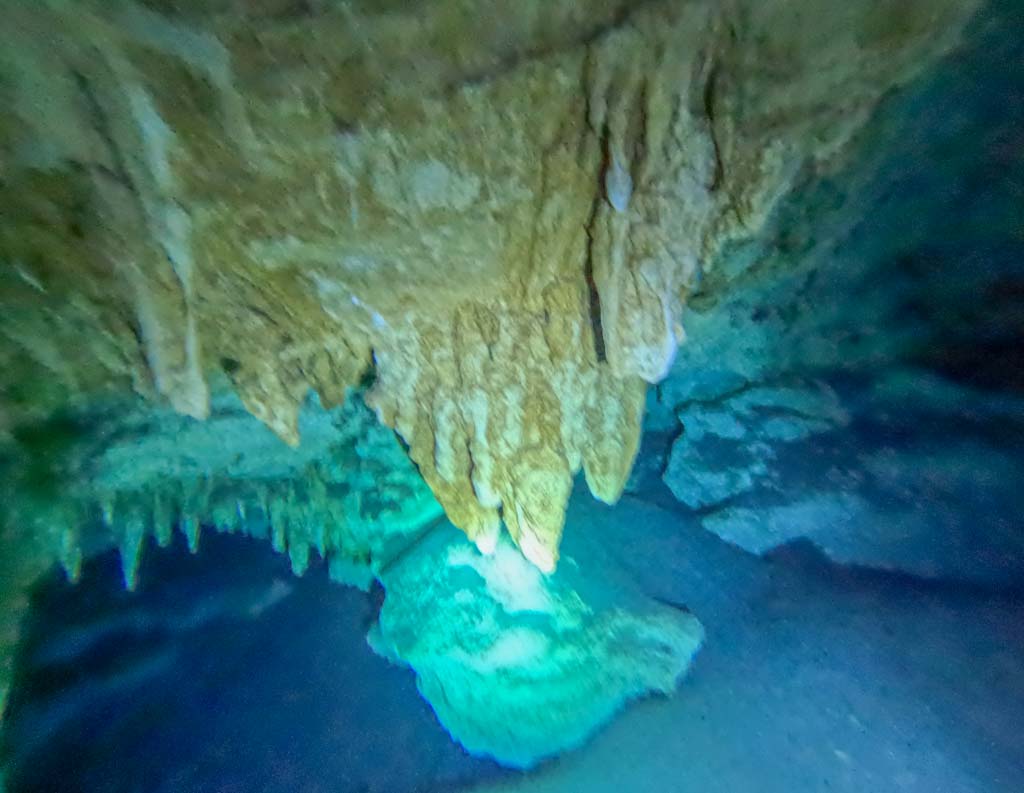
- Diving certification: Open Water
- Location: Dos Ojos Cenote in Tulum
- Highlight: The thrilling passageway filled with stalactites and stalagmites
Bat Cave is in Dos Ojos Cenote and can easily be paired with a dive to The Pit.
It’s completely different from The Pit in that your maximum depth for Bat Cave is 9m and you’ll navigate through a dark cavern filled with delicate stalactites.
It’s a loop dive and as you get closer to the end, you’ll ascend into a dark bat cave with hundreds of bats flying above you.
This dive really took me out of my comfort zone as the passageway is darker and narrower than I expected. You’ll navigate through the cavern in a single file with the ceiling and natural formations all arms reach away.
But fear not! You’re still in the cavern which means there are exit points throughout the dive. Your guide will point these out in case you start feeling claustrophobic.
It was an exhilarating dive!
Barbie Line
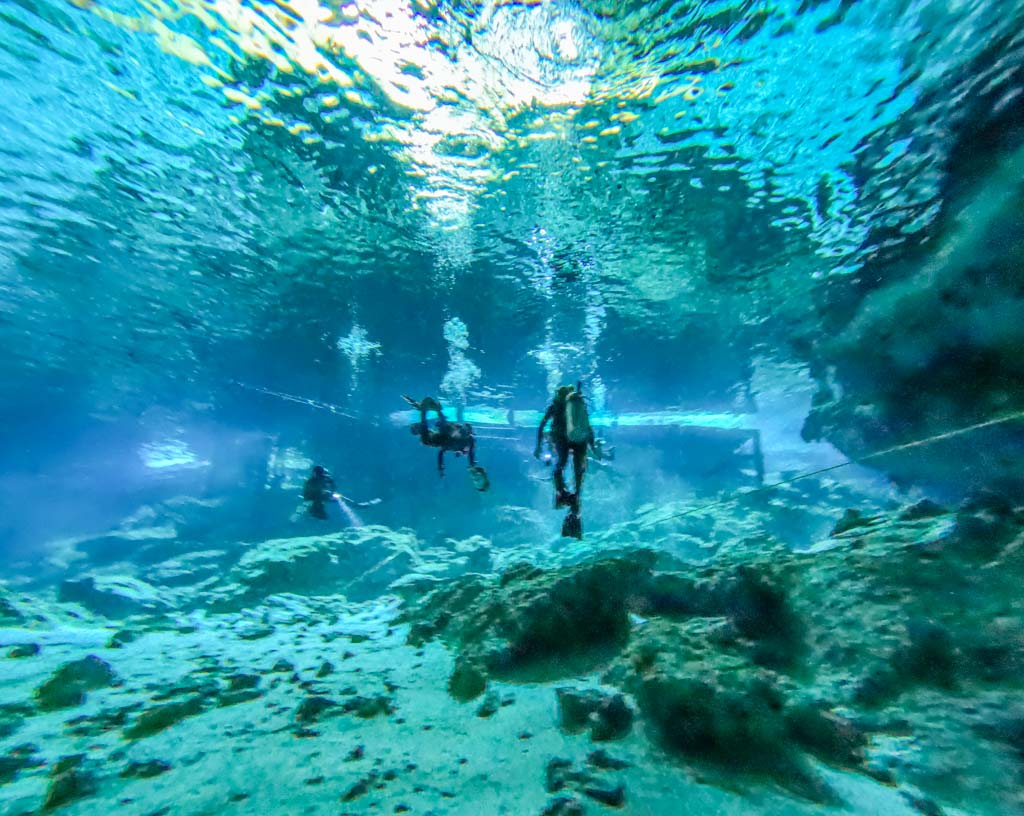
- Diving certification: Open Water
- Location: Dos Ojos Cenote in Tulum
- Highlight: Beautiful stalactites and stalagmites
Barbie Line is part of the same cenote as Bat Cave: Dos Ojos Cenote in Tulum. You can choose to dive one or the other, or even do both. But note that they are similar dives and I recommend pairing one dive at Dos Ojos with The Pit instead.
Barbie Line is a shallow dive reaching depths of 6m. It’s filled with impressive stalactites and stalagmites.
There’s a Barbie doll at the end of the cavern which marks the turnaround point, hence the name Barbie Line.
I recommend Barbie Line if you’re nervous about cenote diving in Tulum. The passageway is slightly bigger with more light when compared to Bat Cave. And it’s a relatively easy yet beautiful cenote to explore.
Angelita Cenote
- Diving certification: Advanced Open Water
- Location: Angelita Cenote in Tulum
- Highlight: Swimming through the Hydrogen Sulfide cloud
Cenote Angelita is an advanced cenote dive that’s a favorite for many experienced divers.
Its biggest attraction lies in the spectacular hydrogen sulfide layer which sits 25m deep.
These hydrogen sulfide clouds are formed when bacteria break down plant and animal material that has fallen into the cenote. It’s a poisonous gas so you won’t spend too much time at this depth.
Unlike Cenote The Pit, which also has this same cloud, you actually swim through the hydrogen sulfide layer in Angelita Cenote. It’s dense, thick, and incredibly eerie.
Car Wash
- Diving certification: Open Water
- Location: Aktun Ha Cenote in Tulum
- Highlight: Beautiful dive with water lilies
Aktun Ha Cenote was once a place where local taxi drivers came to wash their cars. Hence, it’s been dubbed “Car Wash”.
At a maximum depth of 15m, Carwash is famed for its beautiful water lilies and abundance of natural light that enters the cavern. It’s an easy dive that’s often paired with Angelita Cenote.
Carwash is also known for its resident caiman that lives in the area. But don’t worry, they never get too close to divers.
How much does it cost to go diving in Tulum
Cenote diving in Mexico is not cheap – but it’s worth every cent.
I paid $170 for 2 dives which included all my diving equipment, wetsuit, cenote entrance fee, and transport to the cenotes from Tulum.
I booked my dives with Dive with Eva who came highly recommended by other travelers I met on my backpacking trip. She was amazing!
At first I was nervous about cenote diving, but after her thorough dive and safety briefings, I felt that I was in good hands. And I was!
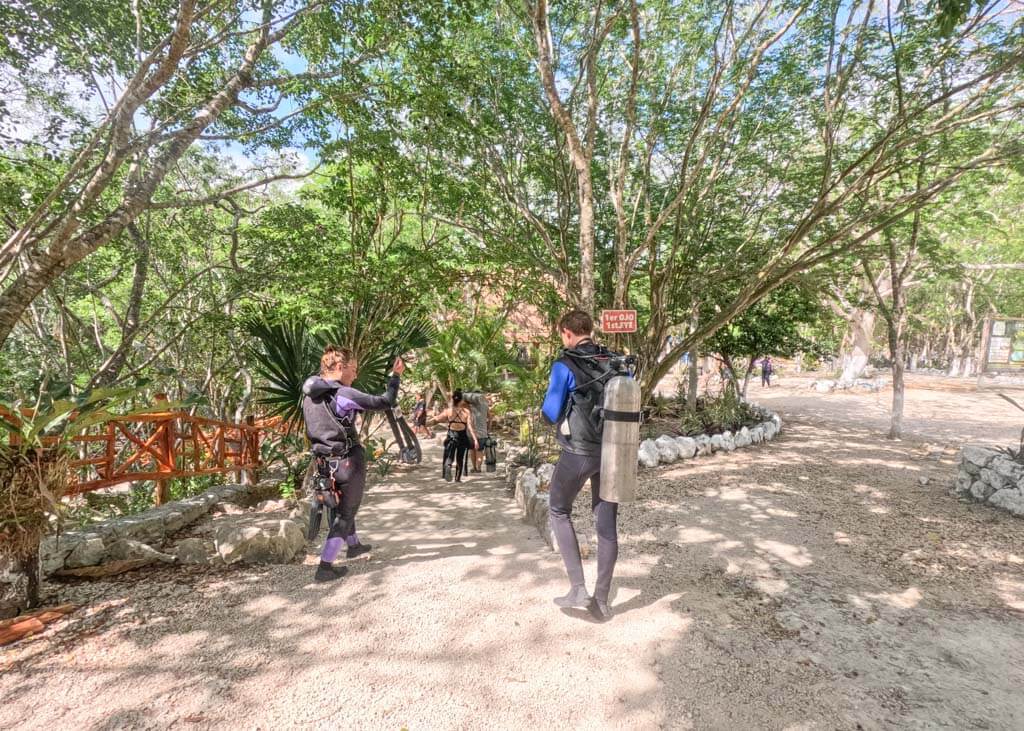
Final thoughts about scuba diving in Tulum
Words can’t explain the thrill of cenote diving in Mexico! Nothing compares, and if you’re on the fence about whether you should do it or not, go for it. You will not regret it.
If you’re looking for other places to dive in Mexico, I highly recommend Isla Mujeres as the next stop on your itinerary. The dive sites in Isla Mujeres are some of the best I’ve experienced, and the visibility is incredible.
Do you want to go cenote diving in Tulum? Or have you already been? Drop me a message in the comment section below with your thoughts or questions.
Looking for more Mexico travel inspiration? Check out my other posts!



Do you have the contact details for Dive with Eva? Thanks!
Hi Jasmine, you can contact here through her Insta page here.